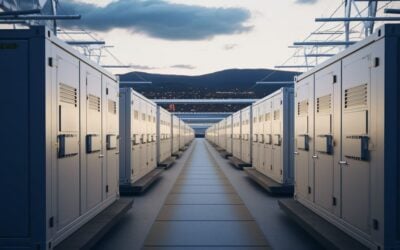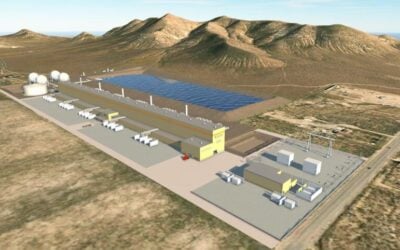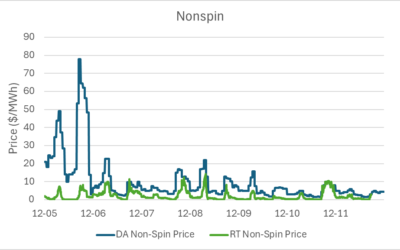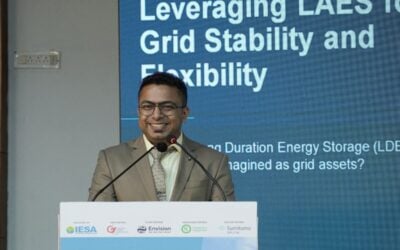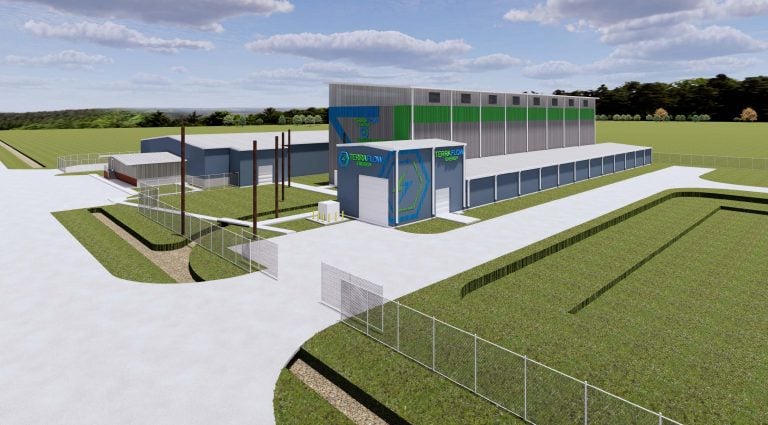
As the US looks to establish reliable domestic battery supply chains, TerraFlow Energy and ESS Tech look beyond lithium-ion for long-duration energy storage solutions.
TerraFlow’s 9.6MW/48MWh Texas BESS
Long-duration energy storage (LDES) developer TerraFlow Energy has announced a 9.6MW/48MWh vanadium redox flow battery (VRFB) energy storage system (BESS) in Bellville, Texas.
According to TerraFlow, the project will be one of the largest LDES deployments of its kind in the state.
The project will employ TerraFlow’s large-tank flow battery solution, designed for “safe, stable, and long-life operation.”
Try Premium for just $1
- Full premium access for the first month at only $1
- Converts to an annual rate after 30 days unless cancelled
- Cancel anytime during the trial period
Premium Benefits
- Expert industry analysis and interviews
- Digital access to PV Tech Power journal
- Exclusive event discounts
Or get the full Premium subscription right away
Or continue reading this article for free
TerraFlow’s customer entered into a vanadium electrolyte lease agreement with vanadium flow battery developer Storion Energy.
The company notes that while the lease is directly between the customer and Storion, TerraFlow’s relationship with Storion made it possible.
Storion acts as the keeper of vanadium units stored by Largo Physical Vanadium (LPV) for its electrolyte leasing model used in vanadium flow batteries. Largo Physical Vanadium is a subsidiary of primary vanadium producer Largo Resources.
Earlier this month, Storion and TerraFlow entered into a strategic supply agreement, where Storion will supply its vanadium electrolyte production and manufacturing capabilities to support TerraFlow’s skid-based architecture.
The Bellville project is expected to reach initial energisation in Q1 of 2027.
It is unclear if the project has reached financial close or what the undisclosed customer will use it for; however, longer-duration BESS projects have recently become more valuable for energy trading in the Electric Reliability Council of Texas (ERCOT) market.
TerraFlow also notes the safety of vanadium flow batteries as a major feature compared to lithium-ion (Li-ion).
Vandium flow batteries do not have a thermal runaway risk, but it is important to note that the sulfuric acid used in some systems can leak or become unbalanced.
Travis Torrey, Chief Technology Officer of Storion said of the Bellville project:
“Our company’s focus is to provide a cost-effective, domestic supply chain to enable the rapid adoption of vanadium flow battery solutions. This lease demonstrates how the right commercial structure can speed up deployment, reduce capital barriers, and provide reliable access to high-quality vanadium electrolyte.”
Torrey previously emphasised a domestic supply chain, speaking with Energy-Storage.news in April, when he said:
“What’s important to us is creating a stable business that can operate in a variety of environments. That way we can consistently deliver to our customers.”
ESS receives US$31 million to advance LDES solution
In other flow battery news, iron and saltwater electrolyte flow battery energy storage manufacturer ESS Inc. has received US$31 million in insider-led funding measures.
The package includes approximately US$900,000 in short-term loans from, and warrants issued to a syndicated group led by members of ESS’s board of directors and the management team, along with participation from an investment fund managed by Yorkville Advisors Global.
Additionally, there is a production tax credit transaction with an affiliate of SB Energy valued at approximately US$800,000. ESS has also engaged in an equipment sale-leaseback transaction with a U.S. strategic partner, involving US$4 million in cash, subject to certain closing conditions.
Furthermore, ESS has executed a Standby Equity Purchase Agreement with YA II PN, which grants ESS the right, but not the obligation, to sell up to US$25 million of its common equity to the investor at a time of its choosing over a three-year period.
This arrangement is subject to standard limitations, such as requiring shareholder approval for aggregate issuances over 19.99% of the company’s outstanding shares.
In addition to this funding package, ESS has secured the first order for its newest product, Energy Base, to be used in an 8MWh project for an undisclosed customer.
ESS Inc. effectively discontinued production and sales of its Energy Warehouse commercial and industrial (C&I) solution and Energy Center utility-scale solution, instead targeting much longer duration so-called ‘renewable baseload’ projects with Energy Base, aimed at roughly 10-hour to 23-hour duration applications.
As with the previous iterations, Energy Base uses ESS Inc.’s proprietary iron electrolyte technology for which the Oregon-headquartered company is the sole IP holder, licensing it to partners on a limited basis in overseas markets including Australia.
ESS went public via a special purpose acquisition company (SPAC) transaction in 2021, but faced challenges in commercialising.
In 2023, the four most high-profile energy storage companies listed via SPAC mergers, including ESS, saw their share prices fall an average of 80% after going public.
In February of this year, the company’s CEO resigned, and ESS said it had “engaged advisors to evaluate potential commercial or financial transactions to enable this new strategic direction.”
In May, ESS reported that it faced the risk of bankruptcy and required funding to sustain its operations.
At the end of that month, the company received funding and said it would continue forward with the plan to develop the Energy Base solution.
It is unclear if that funding is the same as the recently announced US$31 million funding. ESN asked ESS for comment but did not receive a response by the time of publication.
The company also notes that preliminary unaudited financial results for Q2 2025, compared to Q1, show nearly a 300% increase in revenue, along with a 22% reduction in the cost of revenue, a 37% decrease in operating expenses, a 43% improvement in net loss and a 49% increase in adjusted EBITDA.
ESS’s directors will waive their cash compensation for 2025 in accordance with the Company’s external director compensation policy.

